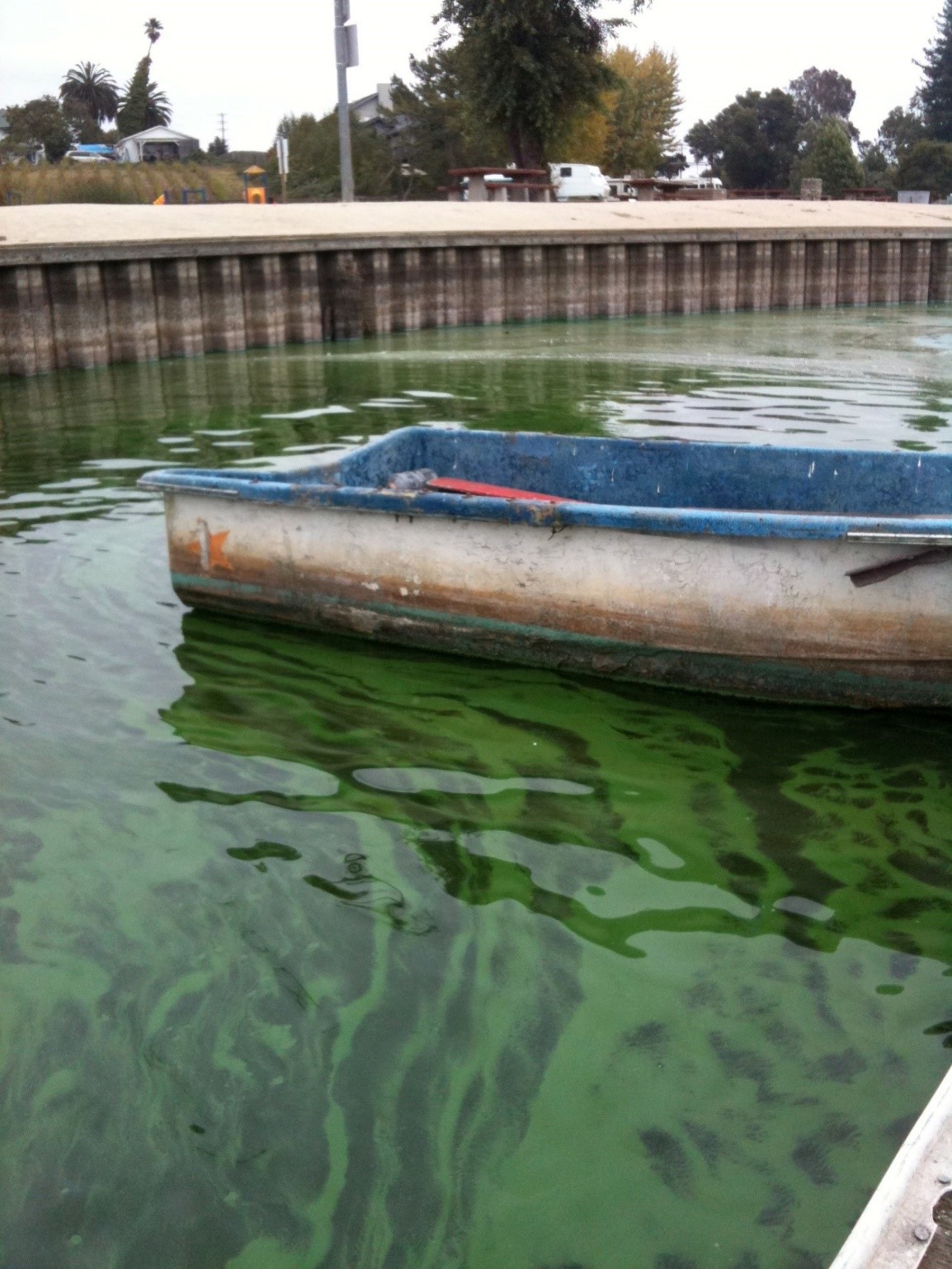HAB experts develop statewide strategy for responding to toxic cyanobacterial blooms

A group of scientific experts on harmful algal blooms in California has developed a statewide strategy for responding to HABs and mitigating their impacts in water bodies across California.
The strategy, co-authored by SCCWRP and published in February by the State Water Board’s Surface Water Ambient Monitoring Program (SWAMP), provides a roadmap that California’s aquatic resource agencies can use to build capacity for monitoring HABs, assessing a water body’s susceptibility to these toxic blooms, and coordinating management responses.
HABs are events that trigger production of algal toxins that can impair water quality and recreational uses, as well as threaten the health of humans, wildlife, and pets that come into contact with these toxins. Multiple water bodies in California already have been placed on the state’s 303(d) listing of impaired water bodies due to the toxins produced by HABs.
Among the report’s recommendations is to use satellite imagery to identify these blooms, develop a centralized online database for tracking HAB events and for issuing bloom advisories, and craft consistent statewide procedures for sampling, health and safety, and quality assurance.
The report, titled California Freshwater Harmful Algal Blooms Assessment and Support Strategy, is an outgrowth of a 2012 workshop hosted by SWAMP aimed at addressing the growing threat posed by cyanotoxins. One of the workshop’s key recommendations was to develop a long-term, statewide vision and strategic plan for responding to the issue in California.
This strategy report is intended to serve as a conversation starter that various aquatic resource agencies can use to coordinate and implement a comprehensive strategy. SWAMP already has begun implementing many of the report’s recommendations with support from SCCWRP and others.
For more information, contact Dr. Meredith Howard.
More news related to: Eutrophication, Harmful Algal Blooms, Top News